Dashlane 是一种密码管理工具,它提供了一种安全的方式来跨多个系统和应用管理用户凭据、访问权限控制和身份验证。Dashlane 在 180 个国家/地区拥有超过 1800 万用户和 2 万家企业。它适用于 Android、iOS、macOS、Windows 和适用于 Chrome、Firefox、Edge 和 Safari 的 Web 应用。
机会
许多用户选择密码管理工具是由于处理密码时遇到的苦恼和烦恼。虽然密码管理工具能起到帮助作用,但事实表明,密码最大的问题之一就是安全漏洞。另一方面,通行密钥可实现无密码身份验证,并在安全性方面取得了重大进展。
通行密钥是一种简单而安全的身份验证技术,让用户无需输入密码即可登录在线帐号。它们不能重复使用,也不能泄露信赖方的服务器泄露事件,保护用户免受钓鱼式攻击的侵害。通行密钥基于开放标准构建,适用于所有主要平台和浏览器。
作为一种身份验证工具,Dashlane 的主要目标是确保客户的凭据安全无虞。他们认识到通行密钥对用户安全的重要性,因此调整了其应用,以支持跨设备、浏览器和平台的通行密钥。借助通行密钥支持,它们可以通过防范网上诱骗的身份验证方法为用户提供安全便捷的访问。
实施步骤
用于替代密码的通行密钥是一个相对较新的概念,为了应对从熟悉的登录方式变为不熟悉的登录方式的挑战,Dashlane 团队考虑了各种解决方案。
在桌面版网站上,他们通过浏览器扩展程序实现了条件界面支持,帮助用户顺利选择是使用密码还是通行密钥登录支持这两种登录方法的网站。用户点按用户名输入字段后,系统会弹出自动填充建议对话框,其中包含存储的通行密钥和密码自动填充建议。然后,用户可以选择一个帐号并使用设备屏幕锁定方式登录。
在 Android 上,他们使用了 Credential Manager API,该 API 在单个 API 中支持多种登录方法,例如用户名和密码、通行密钥和联合登录解决方案(例如“使用 Google 账号登录”)。凭据管理器简化了开发流程,让 Dashlane 只用了 8 周的时间就能在 Android 上实现通行密钥支持(只有 1 名工程师)。
成果
数据显示,相较于现有密码流程,用户对通行密钥流程的满意度更高。
对于网络上的通行密钥身份验证机会,转化率是 92%(当 Dashlane 会建议用户保存通行密钥以供用户登录时),而对于使用密码自动登录的机会,转化率为 54%。 与密码相比,转化率提高了 70%,表明采用通行密钥是很好的迹象。
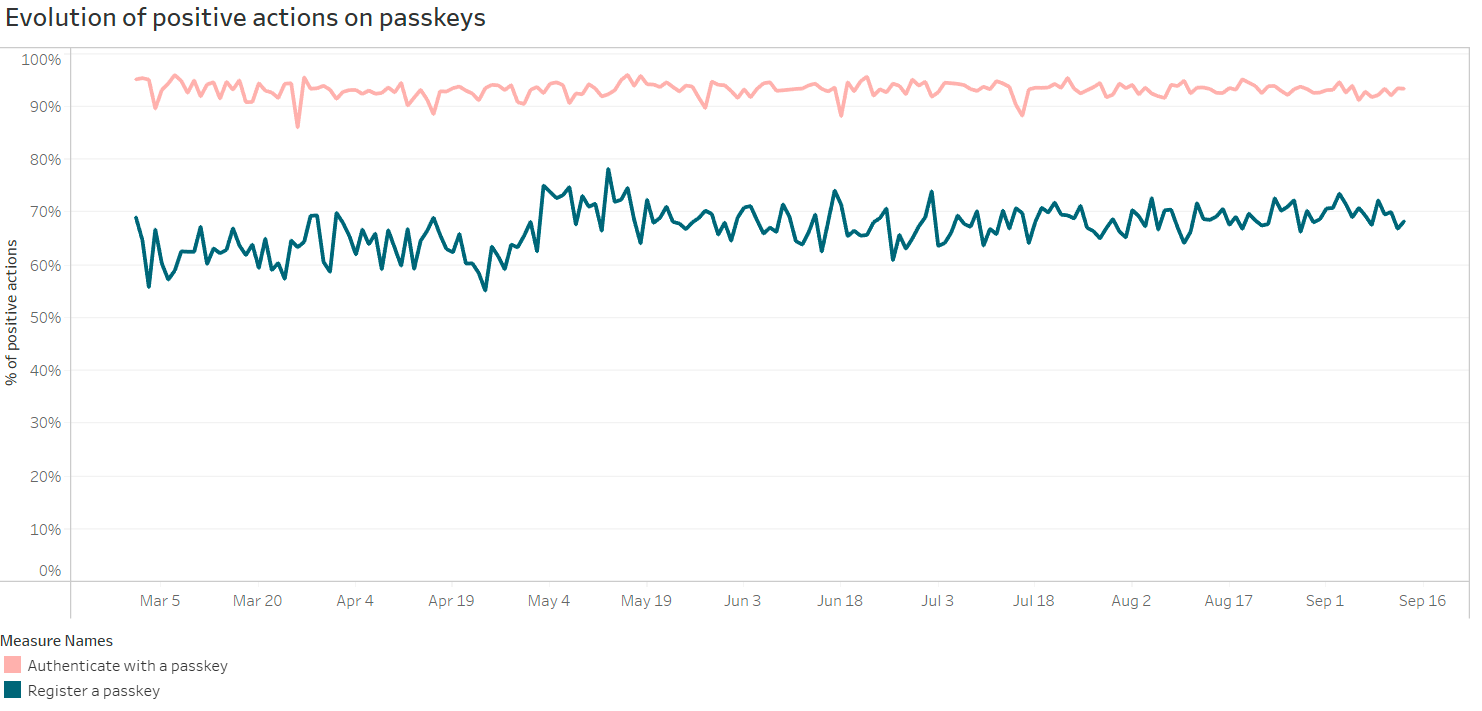
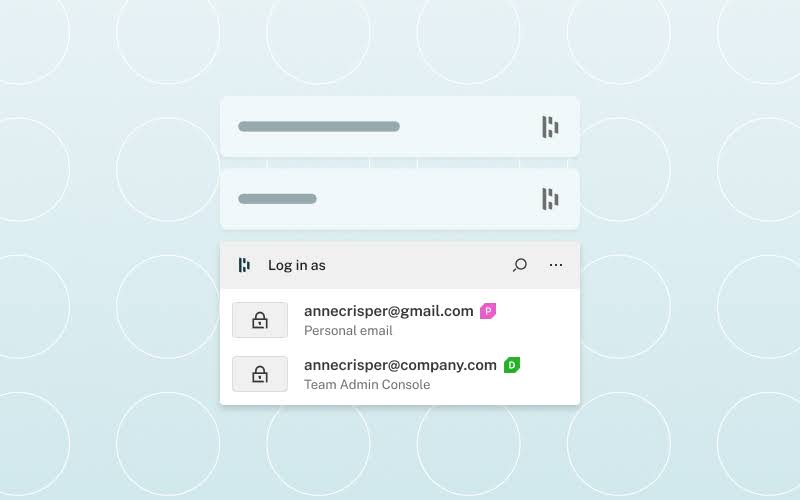
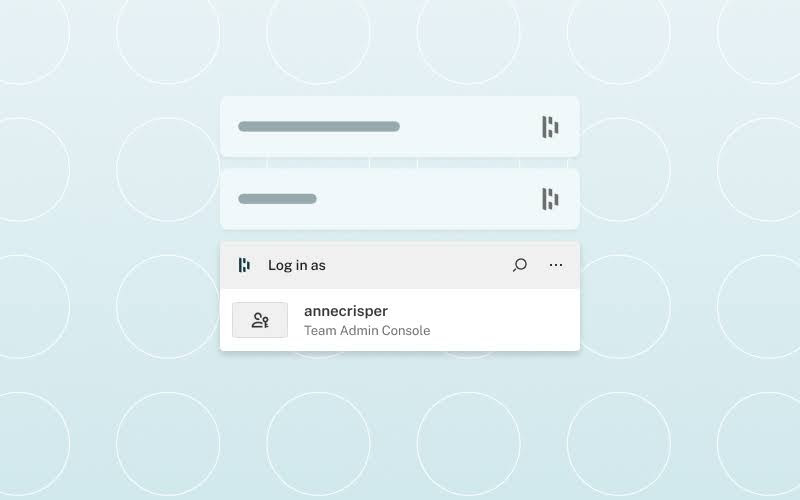
这里的转化率是指用户访问支持通行密钥的网站时执行的操作。如果用户尝试注册或使用通行密钥,桌面设备上的 Chrome 上会显示一个 Dashlane 对话框。如果用户继续并创建新通行密钥或使用现有通行密钥,则视为成功。如果用户关闭对话框或取消创建通行密钥,系统会将其视为失败。相同的用户体验流程也适用于密码。
此外,Dashlane 还发现,通行密钥注册机会的转化率为 63%(当 Dashlane 询问是否将新创建的通行密钥保存到用户的保险柜中时),而有关保存新密码的建议的转化率仅为 25% 左右。这表示 Dashlane 的通行密钥保存建议比保存密码的建议更相关且更精确。
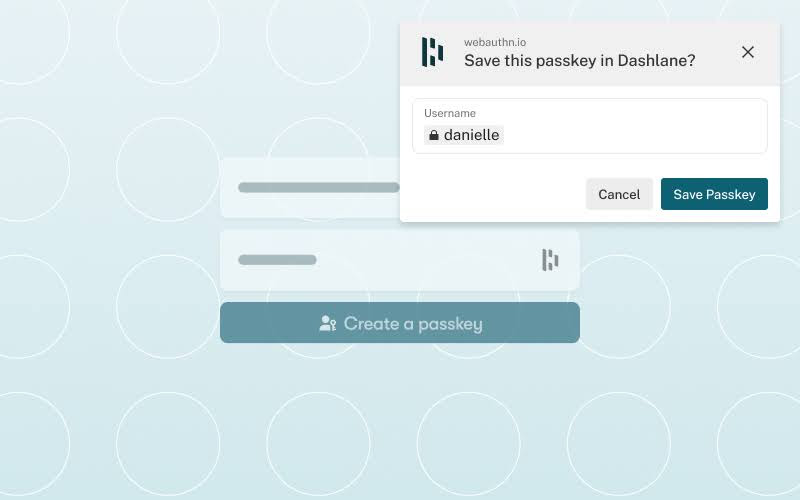
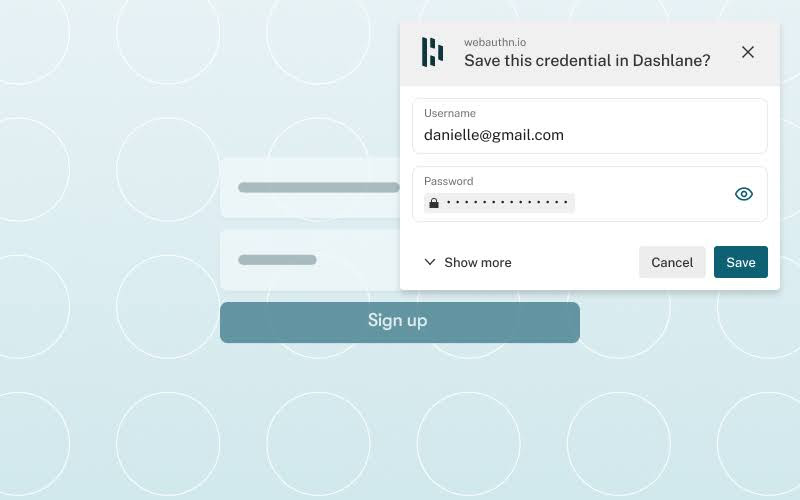
Dashlane 发现,通行密钥的使用率不断加快,通过网页保存和使用的通行密钥每周平均增加了 6.8%。
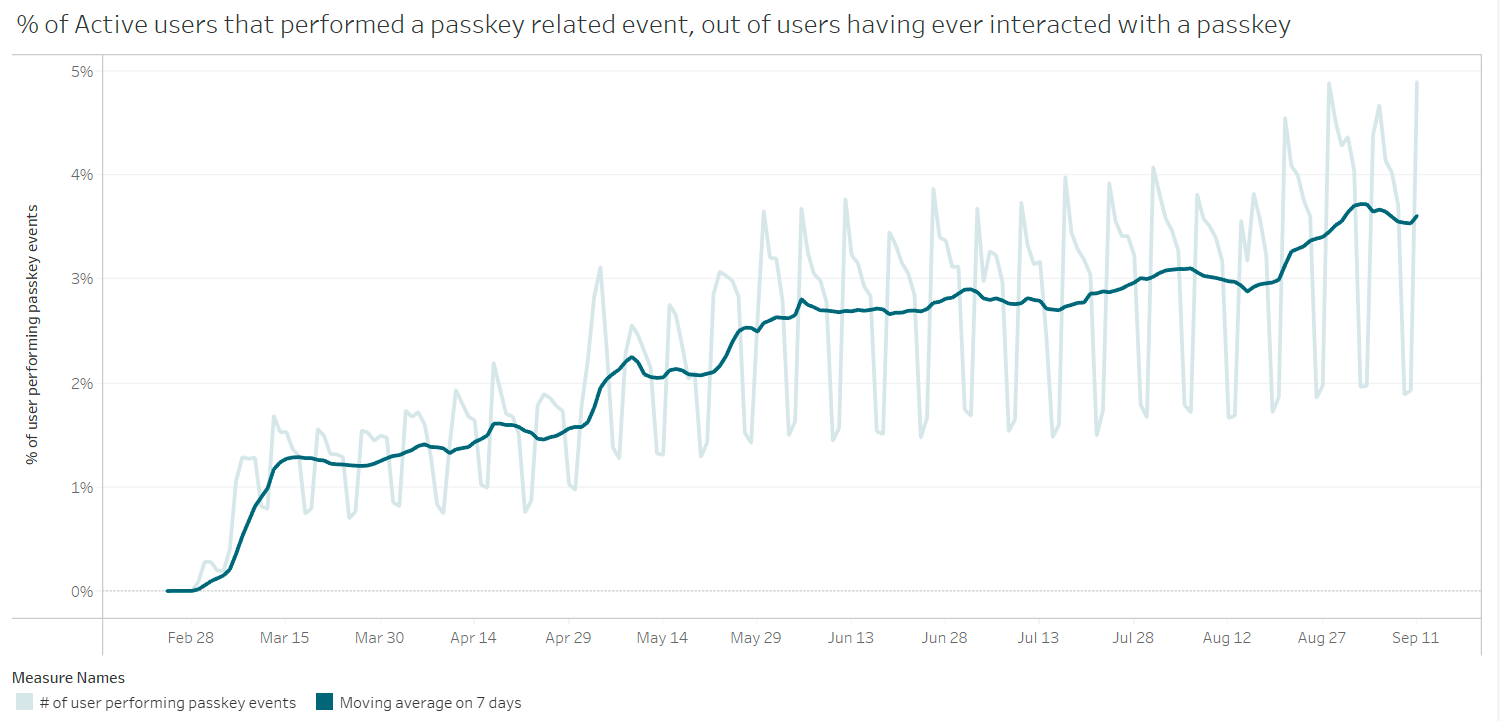
断球数
虽然通行密钥是用户刚刚开始熟悉的新技术,但采用率和积极的互动率表明,Dashlane 用户对通行密钥流程的满意度高于现有密码流程。
Dashlane 会跟踪并调查所有通行密钥错误,并指出通行密钥错误的数量并不多。此外,他们还会收到客户有关如何使用或管理通行密钥的一些问题。这可能表明,直观的用户体验、清晰的帮助中心文档、当今通行密钥用户已经熟练掌握通行密钥的倾向,或者是这些因素的某个组合。
“及时了解市场格局和行业的发展动态,预测对客户体验的潜在影响,并准备好满足他们的需求,这一切都会带来丰厚的回报。这部分是因为我们快速实现了 Credential Manager API,客户可以放心,无论身份验证方法如何发展,他们都可以继续依赖 Dashlane 存储和访问服务。”
- Rew Islam,Dashlane 产品工程和创新总监
